
Thousands of students, teachers and citizens visited the “Zappeion” in Athens, from 9-16 December 2016, and took part in the 8-day Seminar about Traffic Behaviour, within the framework of the event “Road Safety: Education and Culture” organized by the Institute of Road Safety (RSI) “Panos Mylonas” and the European Commission Representation in Greece in cooperation with the Zappeion Hall, under the auspices of the Hellenic Parliament. More than 1,000 elementary students, middle school, high school, preschool children and pupils who take part in programs of the Hellenic Parliament Foundation, and hundreds of teachers and citizens had a great opportunity to try the unique live activities of the RSI, actively participating in the 8-day Traffic Behaviour program. ![]()
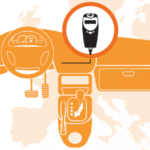
ETSC released a report concerning Alcohol interlocks and drink driving rehabilitation in the EU-Guidelines for Member States. Across Europe there is still a group of hard core drink driving offenders that seem unwilling or unable to change their behaviour despite the use of traditional countermeasures such as awareness campaigns, fines and driving bans. For this group, the introduction of an alcohol interlock programme seems to be an effective measure.
The report consists of three parts: The first provides an overview of the background to the drink driving problem and some traditional countermeasures. The second part profiles alcohol interlock offender programmes from five European countries. The third and final part presents some main practical guidelines for national authorities that are considering an alcohol interlock programme. ![]()
![]()
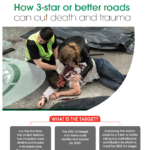
For the first time the United Nations has included road deaths and injuries as a Sustainable Development Goal (SDG 3.6 – By 2020, halve the number of global deaths and injuries from road traffic accidents). iRAP believes that improving the world’s roads to a 3-star or better rating is a key way to achieve the SDG target of halving road deaths and injuries by 2020. In the following links a range of materials that iRAP is developing to support advocates for 3-star or better roads are available. ![]()
![]()
![]()

The 2nd Annual Conference on Intelligent Transportation Systems and related developments in Greece, organised by ITS Hellas took place with great success in Athens, on 19-20 December 2016. Aim of the conference was to discuss the latest developments and the wide application of Intelligent Transport Systems (ITS) in Greece, as a mean of economic development and prosperity and to ensure the effectiveness, efficiency and transport safety for the benefit of users and the environment. ![]()
![]()
The NTUA presentation concerned: Intelligent Transportation Systems supporting older drivers: Review and Future directions ![]()

A Regional workshop on road safety, hosted by the Kenya National Transport and Safety Authority and co-organised by the Africa Transport Policy Program (SSATP) of the World Bank, the International Road Traffic Accident Database organisation (IRTAD) of the ITF/OECD and the United Nations Economic Commissions for Africa and for Europe, took place with great success in Nairobi, Kenya from 13 to 15 December 2016. ![]()
This Workshop covered United Nations Road Safety legal instruments, fundamentals of road safety data management and minimum data requirements for all African countries to monitor progress towards the Decade of Action for Road Safety and Sustainable Development Goals, with active participation of African international road safety stakeholders and experts, including the active contribution of NTUA with the following presentations:
Africa Road Safety Workshop Safety Performance Indicators ![]()
The SaferAfrica Road Safety Observatory ![]()
Basic Aspects of Road Safety in Africa – Short Questionnaire ![]()

At the end of another year full of surprises and non-stopping efforts, we heartily wish you very joyful Christmas holidays and a very happy and fruitful new year 2017, plenty of personal and professional achievements. Let’s face the new challenges ahead with creative hope and scientific persistence for even safer roads in Europe and worldwide.
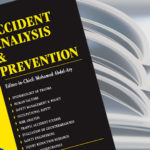
A paper titled “Innovative motor insurance schemes: A review of current practices and emerging challenges” authored by Dimitris Tselentis, George Yannis, and Eleni Vlahogianni, is now published in Accident Analysis & Prevention, , with the support and data from OSeven Telematics. The objective of this paper is to provide a review of the most popular and often implemented methodologies related to Usage-based motor insurance (UBI). UBI schemes, such as Pay-as-you-drive (PAYD) and Pay-how-you-drive (PHYD), are a new innovative concept that has recently started to be commercialised around the world. The main idea is that instead of a fixed price, drivers have to pay a premium based on their travel and driving behaviour. There is evidence that UBI implementation would eliminate the cross-subsidies phenomenon, which implies less insurance costs for less risky and exposed drivers. It would also provide a strong motivation for drivers to improve their driving behaviour, differentiate their travel behaviour and reduce their degree of exposure by receiving feedback and monitoring their driving preferences and performance, which would result in crash risk reduction for each driver individually but also for the whole population. ![]()

The prestigious Decade of Action Special Award for Road Safety for 2017 goes to the International Transport Forum (ITF) ![]() . The organisation is being honoured for its leadership in improving delivery of road safety across the world and its recent report “Zero Road Deaths and Serious Injuries: Leading a Paradigm Shift in Road Safety” specifically. “The new report comes at a time when the world needs to change up a gear or two to accelerate efforts to reduce the unacceptable toll of death and serious injury on our roads”, said Prince Michael of Kent, patron of the award. “It is a most welcome addition to the all-important bank of knowledge available to governments and is a fine example of the leadership shown by ITF.”
. The organisation is being honoured for its leadership in improving delivery of road safety across the world and its recent report “Zero Road Deaths and Serious Injuries: Leading a Paradigm Shift in Road Safety” specifically. “The new report comes at a time when the world needs to change up a gear or two to accelerate efforts to reduce the unacceptable toll of death and serious injury on our roads”, said Prince Michael of Kent, patron of the award. “It is a most welcome addition to the all-important bank of knowledge available to governments and is a fine example of the leadership shown by ITF.” ![]()
The ITF Report “Zero Road Deaths and Serious Injuries: Leading a Paradigm Shift to a Safe System“, was prepared by the ITF Safe System Implementation Working Group composed by international road safety experts including NTUA Prof. George Yannis.

A draft proposal for the constitution of a Road Safety Trust Fund was launched for consultations at the first Global Sustainable Transport Conference in Ashgabat. The proposed UN Road Safety Fund will aim at bridging the gaps in the mobilization of adequate resources to fund road safety projects at local, national and global levels. The total additional grant funding for road safety needed to achieve the SDG road safety targets is estimated at $770 million annually over the next decade. The proposed UN Road Safety Fund will serve as a vehicle to leverage additional funding. It is estimated that every $100 million contributed to the Fund would support:
- the leveraging of $3.4 billion of country and city road safety investment;
- the saving of 64,000 lives; and
- the averting of 640,000 serious injuries.
With $770 million of grant funding per year over the coming decade, the proposed UN Road Safety Fund could save 5 million lives and avert 50 million serious injuries in low and middle-income countries. ![]()
![]()

The European Commission adopted recently a European Strategy on Cooperative Intelligent Transport Systems (C-ITS), a milestone initiative towards cooperative, connected and automated mobility. The Strategy will make it possible to deploy vehicles that can “talk” to each other and to the transport infrastructure as of 2019, aiming also to enhancing road safety on EU roads. ![]()
![]() The main components of the C-ITS Strategy are:
The main components of the C-ITS Strategy are:
- Avoid a fragmented internal market
- Define and support common priorities
- Use a mix of communication technologies
- Address security and data protection issues
- Develop the right legal framework
- Cooperate at international level

This year’s Annual Polis Conference on “Transport innovation for sustainable cities and regions” took place with great success on 1 and 2 December 2016 in Rotterdam, Netherlands, organised by POLIS, the European cities and regions networking for innovative transport solutions. More than 400 mobility professionals and experts from across Europe and beyond came together to debate on urban and regional mobility. ![]()
![]()

The European Transport Safety Council (ETSC) has published a Position Paper titled “The European Union’s Role in Promoting the Safety of Cycling” containing proposals for a safety component in a future EU Cycling Strategy, authored by Ellen Townsend. This paper builds on recent calls for the European Commission to come forward with a cycling strategy for the European Union and ETSC supports the need for co-ordinated European action on cycling and welcomes a pan-European strategy. This Position Paper is designed to serve as inspiration for the safety component of such a strategy and will look at initiatives within these different areas of action of relevance to cyclist safety. ![]()
![]()
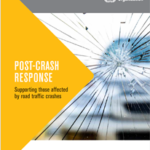
The World Health Organization has released a new Report titled: “Post-crash response: Supporting those affected by road traffic crashes” outlining policies for improving health care and other systems to provide the key elements of post-crash support, addressing the fifth pillar of the Decade of Action for Road Safety 2011-2020. A broad and integrated approach to support survivors and families can mitigate the short- and long-term effects of experiencing a road traffic crash and can help those affected return to function and independence at home and at work. An effective post-crash response requires integration of injury care, mental health services, legal support and legislation, and data on road traffic crashes and injuries. ![]()
![]()
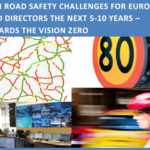
The Conference of European Directors of Roads (CEDR) has recently released a Position Paper titled “Main Road Safety Challenges for European Road Directors the next 5-10 years – Towards the Vision Zero“. The objective of this paper is to highlight the key challenges for the National Road Administrations and to emphasise the need to maintain an ongoing open and creative discussion across the National Road Administrations; to demonstrate the need to work together to advance Road Safety. The key challenges concern: a) the improvement of safety of the existing road infrastructure, b) speeds in harmony with road infrastructure, c) the improvement of safety of vulnerable road users, d) the evaluation and deployment of intelligent transport systems. ![]()

The European Transport Safety Council (ETSC) has launched a new Report on Managing Grey Fleet Safety: A Short Guide for Companies Whose Staff Drive Their Own Cars For Work. When a driver uses their own vehicle for work, they are still under the responsibility of the employer, and this presents a real challenge for managing associated work related road safety risk. Employers may think that it is easier to manage employees using their own cars for work, instead of a company car fleet. However once all of the considerations are taken into account this may not be the case. This guide has been produced to assist organisations review and improve grey fleet management, with a specific focus on safety concerns. It will explain the legal responsibilities as well as the business benefits of an effective grey fleet management policy. It will also explain how grey fleet road risks can be reduced through risk assessment, and stress the importance of integrating grey fleet policy in company procedures and management responsibility. ![]()
![]()

A new Legislation regarding older drivers was recently adopted in Greece: ![]() O.G. 4413/2016 (Α’ 148), Article 74: Medical Assessment of Drivers and Candidate Drivers. According to this new Legislation, among other provisions, the minimum requirements for physical and mental fitness to drive were revised and all 80 years old drivers must complete a neurological, neuropsychological and psychiatric assessment in order to be considered as fit or not fit to drive. The results of extensive scientific research carried out jointly by NTUA and Attikon University Hospital have largely contributed to this new legislation.
O.G. 4413/2016 (Α’ 148), Article 74: Medical Assessment of Drivers and Candidate Drivers. According to this new Legislation, among other provisions, the minimum requirements for physical and mental fitness to drive were revised and all 80 years old drivers must complete a neurological, neuropsychological and psychiatric assessment in order to be considered as fit or not fit to drive. The results of extensive scientific research carried out jointly by NTUA and Attikon University Hospital have largely contributed to this new legislation.

The recently established Road Infrastructure Safety Directorate (P.D.109/2014) ![]() of the Hellenic Ministry of Infrastructure, Transport and Networks has further adapted Greek legislation to the provisions of Directive 2008/96/EC
of the Hellenic Ministry of Infrastructure, Transport and Networks has further adapted Greek legislation to the provisions of Directive 2008/96/EC ![]() on Road Infrastructure Safety Management by introducing the certification procedures for Road Safety Auditors in Greece (OG 1694/13.6.2016)
on Road Infrastructure Safety Management by introducing the certification procedures for Road Safety Auditors in Greece (OG 1694/13.6.2016) ![]() .
.
This new legislation concerns the establishment and implementation of procedures for road safety audits and inspections, the assessment of road safety impacts and the management and improvement of the Greek national road network safety level, at the design, construction and operational stages. According to these new procedures, Road Safety Audits will be performed by Certified Auditors who should have completed a Certified Road Safety Training Program and obtained the certificate of competence. NTUA has actively contributed to the development of these procedures and the related scientific supporting material.

Dr. Panagiotis Papantoniou obtained the NTUA Thomaidion Αward 2016 for the publication of the journal paper titled “Assessment of driving simulator studies on driver distraction”, co-authored by Prof. George Yannis and Dr. Eleonora Papadimitriou in the Advances in Transportation Studies. ![]()
Dr. Dimosthenis Pavlou obtained the NTUA Thomaidion Αward 2016 for the publication of the conference paper titled “Driving behaviour of drivers with Mild Cognitive Impairment and Alzheimer’s Disease: a driving simulator study”, co-authored by Dr. Eleonora Papadimitriou, Dr. Costas Antoniou, Dr. Panagiotis Papantoniou, Prof. George Yannis, Prof. John Golias, and Dr. Sokratis Papageorgiou, in the Proceedings of the 94th Annual meeting of the Transportation Research Board, Washington, January 2015. ![]()
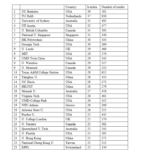
According to a recent University Ranking, based on the number of references in scientific journals over the last decade (2007-2016) in the field of transportation, NTUA ranks 3rd in Europe and 19th worldwide (h-index: 26). The Department of Transportation Planning and Engineering of the School of Civil Engineering of the National Technical University of Athens has contributed largely to this excellent performance and road safety was one of the main components. ![]()
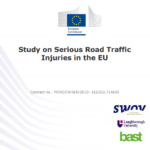
The Road Safety Unit of DG Move of the European Commission has recently released a Report titled “Study on Serious Road Traffic Injuries in the EU” prepared by SWOV, Loughborough University and BAST. According to the European Commission, 135,000 people are seriously injured on European roads every year ![]() and while the number of deaths has fallen dramatically over the last decade, serious injuries have declined at a much slower rate. It is therefore recommended in this study that the EU should set a target to reduce the number of people seriously injured in road collisions.
and while the number of deaths has fallen dramatically over the last decade, serious injuries have declined at a much slower rate. It is therefore recommended in this study that the EU should set a target to reduce the number of people seriously injured in road collisions.
The new study examined real world collision data and investigation outcomes from across Europe in an attempt to boost understanding of the most common collision situations that result in serious injuries. The data reveal many of the key risk factors and victim profiles which could help member states identify the best measures to reduce such collisions. ![]()
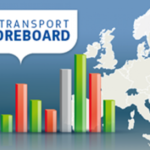
The European Commission has published the 2016 edition of the EU Transport Scoreboard ![]() , a benchmark which compares how Member States perform in 30 categories covering all aspects of transport
, a benchmark which compares how Member States perform in 30 categories covering all aspects of transport ![]() , including road safety
, including road safety ![]() . The objective of the Scoreboard is to assist EU Member States to identify areas requiring priority investment and action and demonstrates how the EU further deepens the internal market in transport.
. The objective of the Scoreboard is to assist EU Member States to identify areas requiring priority investment and action and demonstrates how the EU further deepens the internal market in transport.
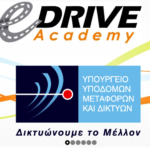
e-Drive Academy is an Innovative Educational e-platform for Safe, Smart, Ecological Transport and Driving, developed and operated by the General Directorate of Road Safety of the Hellenic Ministry of Infrastructure, Transport and Networks. e-Drive Academy provides all necessary educational services in order to develop an improved road safety culture and safe travelling for all road users, regardless of age, education or economic level. The objective of e-Drive Academy is to raise awareness of road users to adapt their behaviour to safer everyday travelling, with particular emphasis on consolidation of road safety issues and traffic safety education of children and preparing them as the responsible drivers of tomorrow. ![]()

“Road Statitics Yearbook 2016” has been released by the European Union Road Federation (ERF). As for many years, this publication provides the road community with essential information on the road transport sector and remains a reference for all policy makers and major stakeholders. The publication features a range of interesting figures concerning the road network in Europe from the length of motorways to funding, past and on-going, as well as key figures on road safety. According to ERF, under-investment in roads, especially the past years of the financial crisis, represents a threat in the social and economic development of the EU member states and ERF aims to assist stakeholders through this publication to better plan future solutions and actions. ![]()
![]()

The New Urban Agenda is a twenty year global policy framework for cities. It has been adopted at the United Nations Habitat III conference, held in Quito, Ecuador. The #SaveKidsLives campaign, contributed towards ensuring road safety goals were included in the Global Goals. Now, with over 1 million supporters, the #SaveKidsLives campaign marks a significant achievement; the New Urban Agenda includes the core objective of a ‘safe and healthy journey to school for every child’ as a priority. ![]()
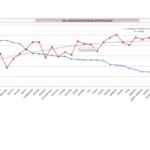
A Diploma Thesis titled ‘Correlation of road safety performance with social and economic indicators in the European Union’ was presented by Ioannis Zantiris in November 2016. For this correlation a database was developed containing the most recent data regarding population, road fatalities, gross domestic product per capita, human development index, unemployment rate and several other economic and social indicators for the twenty eight countries of the European Union. Subsequently, multiple linear regression models were developed and applied for all countries and for groups of countries (northwestern, eastern, southern). The analysis demonstrated that the Human Development Index has the most important impact than any other parameter and its increase leads to road fatalities decrease. ![]()
![]()

The 3rd International Congress “Traffic Enforcement: Challenges & Perspectives” was organised by the Emirates Traffic Safety Society (ETSS), the Arab Road Safety Organization (AROSO), La Prévention Routiére Internationale (PRI) and the Traffic Injury Research Foundation (TIRF) and took place with great success in Abu Dhabi, on 2-3 November 2016. Key road safety experts contributed the state of the art developments on traffic safety enforcement worldwide. The final programme of the Congress is available here: ![]()
NTUA presentation concerned: ‘Best Practices for Efficient Traffic Safety Law Enforcement Programs‘ ![]()

The 2016 Safe Roads – Safe Kids Summit took place with great success on December 8-9, 2016, in Washington D.C. It was a biennial event designed to significantly enhance the visibility of global road safety on the international agenda and to reduce the number of deaths and injuries among children. The Summit offered stakeholders at all levels the opportunity to work together in a manner that is action-oriented and focused on meaningful outcomes, including international organizations, governments, corporations, foundations, researchers, non-governmental organizations, health care workers, first responders, law enforcement, families and children. The 2016 Safe Roads – Safe Kids Summit built momentum for urgently-needed progress on road safety for children worldwide. It focused on rapid implementation of the United Nations Sustainable Development Goals (Global Goals) as they apply to road safety for children. ![]()
![]()

The Ministry of Public Works and Transport (MPWT), Lao PDR, the Ministry of the Environmet (MoE), Japan, Partnership on Sustainable, Low Carbon Transport (SLoCaT), the United Nations Economic and Social Commission of Asia and the Pacific (UN ESCAP) and the United Nations Centre for Regional Development (UNCRD) are organising the Intergovernmental Tenth Regional EST Forum in Asia under the theme “2030 Road Map for Sustainable Transport ~ Aligning with Sustainable Development Goals (SDGs)”. The forum will be held from 14 to 16 March 2017 in Vientiane, Lao PDR. It is expected that approximately 500 participants, including senior government representatives from Asia and the Pacific countries, city mayors, international experts, resource persons, and others as listed below will be attending the conference. ![]()

EuroNCAP announced it’s latest safety ratings, sorted by the date of publication, by star rating and by make in alphabetical order. In 2016, the star rating is based on a vehicle fitted only with safety equipment which is standard across the entire model range, throughout EU28. All cars assessed now have a rating with standard safety equipment only. A second rating might also be available for the same vehicle model which represents the additional safety available from a ‘safety pack’, containing all of the safety technologies needed to achieve the additional star rating and must be available on all variants in all countries where the additional equipment is not standard. The EuroNCAP’s latest safety ratings are now available: ![]()

The Transportation Public Health Link (TPH Link), the Barcelona Institute for Global Health (ISGlobal), and Skidmore, Owings & Merrill LLP (SOM) are organising the International Conference on Transport & Health (ICTH). ICTH is a direct participatory experience. Policy-makers, practitioners and academics from multiple disciplines involved in transport planning and engineering, public health, urban planning, spatial and architectural design, environmental planning, economics and beyond came together in Barcelona, Spain, on 27-29 June 2017, and shared their stories of success and failure; build world-wide collaborative friendships; but most importantly, leave inspired! The theme for ICTH 2017-Barcelona was “Changing Perspectives: Health Impacts of Urban & Transport Related Exposures.” ![]()














































































































































































